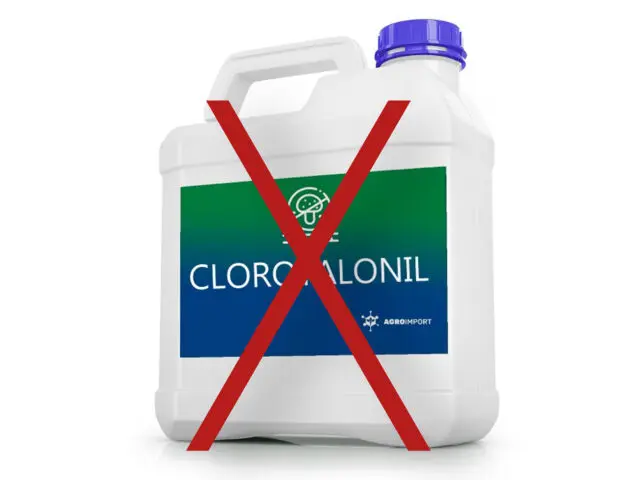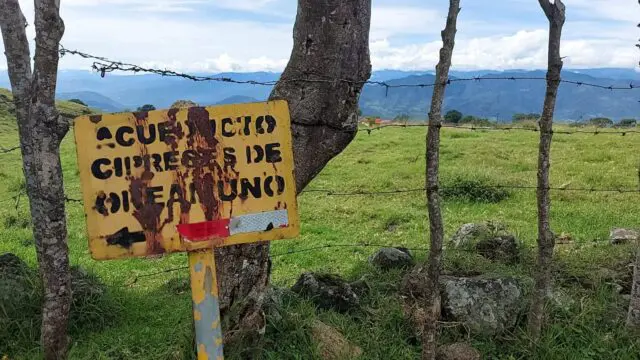In recent days, it became known through statements made by environmental activist and biologist, Fabián Pacheco, that Chlorothalonil was detected in the water of San Pablo in the northern zone of Cartago and that the construction of the new National Water Laboratory was also declared of national interest.
Among other good news reported by Pacheco in the company of fellow activists of Frente Ecocipresses, is that the current Minister of Health of Costa Rica, Mary Denisse Munive, signed a decree on November 8, which bans Chlorothalonil.

It should be noted that environmental activists, including Fabián, representing the Ecocipresses Front, attended a working meeting with representatives of the executive presidency of AyA, the General Management of the Costa Rican Institute of Aqueducts and Sewers, the Directorate of Radiological Protection and Environmental Health of the Ministry of Health, Asada Cipreses, the Regional Institute for Studies on Toxic Substances and the Ombudsman’s Office; The meeting was convened by the Regulatory Authority of Public Services (ARESEP) on the contamination of the aqueduct of the community of Cipreses in Oreamuno de Cartago and consulted by the Intendencia de Agua on water quality and tariffs.
Another of the objectives of the meeting was to harmonize the interests of consumers, users, and providers of public services.
For Pacheco, the decree signed by the Central American country’s health authority, which is also in the hands of the President of the Republic, is the result of the struggle that the Ecocipreses Front has maintained for years “because we, in the amparo appeal that we won previously, demanded in part that a robust, strong laboratory be created, with the capacity to detect contaminants and act”, he said.
At the meeting, the official of AyA and the regional office of Acueductos Rurales Cartago, Vladimir Mesén Montenegro, did not offer further details about the contaminated water sources because supposedly “the laboratory reports were not ready”.
According to what was presented at the ARESEP meeting, for some months there have been rumors that San Pablo had a contamination similar to the one registered in Santa Rosa and Cipreses, which has caused the community to receive water in cisterns for the last year.
Is a National Water Laboratory with greater technical capacity needed?
At the end of October, Frente Ecocipreses consulted the current director of the National Water Laboratory, Darner Mora, on the status of the process to generate a greater technical capacity of the Laboratory – to detect the Chlorothalonil degradates that was demanded by the ruling of the Fourth Chamber.
Mora responded that different suppliers of the necessary equipment and supplies were contacted “and aspects such as technical characteristics based on the requirements of the National Water Laboratory were studied, thus, quotations were obtained for the different requirements, as well as the budget that was deemed necessary”.
They have also made representations to the management of AyA, in search of the endorsement to carry out the bidding process for the construction of the new laboratory building, which was approved through a loan from CABEI for 11.25 million dollars, however, Darner Mora emphasized that for the moment there has been no positive response.
In this sense, the Executive recognizes that the current laboratory facilities are limited in their growth due to the infrastructure it has, which is located in Tres Rios in a house built approximately 100 years ago.

Details on the evaluation table of the Asada of San Pablo
In an Evaluation of the management of the Asada (Asociaciones Administradoras de los Sistemas de Acueductos y Alcantarillados) of San Pablo, Santa Rosa, Oreamuno, carried out in 2016 by the Center for Research in Environmental Protection of ITEC, it was learned that the aqueduct supplies approximately 410 subscribers with a population of about 1. 800 inhabitants and was made up of the Birrís N°1, Birrís N°2, Sanabria Alto, Rosca Van Alto, and Ulloa springs, three of which presented high risks and two intermediate risks where one of the parameters evaluated was the existence of sources of contamination around the tank, including latrines, animals, homes, garbage, agricultural or industrial activity.

It is important to mention that, with this third contaminated Asada, more than 12,000 thousand people would be affected although according to the reports of the Ministries of Health, Environment and AyA “justify the prohibition of chlorothalonil accepted by the Constitutional Chamber and assure that there were around 65,000 people who depended on water supplies in the same conditions”, that is, with agriculture so close to the water sources that it was affecting the quality of the water and generating a very high probability of contamination by the use of chemicals.
Undoubtedly, thanks to the struggle of Ecocipreses, they will be able to increase the number of tests carried out because of the push given to the decree N° 44200-MINAE, published in La Gaceta last November 8, where the Executive Power declared of national convenience the construction of the New National Water Laboratory (LNA).
We must remember that last June 6, the Constitutional Chamber ordered the adoption and execution of the recommendations of the “Chlorothalonil Technical Report” issued by the Ministry of Health, the Ministry of Environment and Energy, and the Costa Rican Institute of Aqueducts and Sewerage, where it was indicated that a coordination process should be initiated with the Directorate of Products of Sanitary Interest (DRPIS) and the heads of the Ministry of Environment and Energy, as well as the Ministry of Agriculture and Livestock to draft a decree that will lead to the prohibition in the shortest possible time.

The Costa Rican government was initially reluctant to respond positively, but thanks to the lobbying of the case, which demonstrates the importance of public health, approval was achieved.
Finally, environmentalist Fabián Pacheco, highlighted other information within the meeting that, in his opinion, generated concern among environmental activists, “we witnessed what was expressed by an official of the University of Costa Rica and Sica, -that he did drink the water of his community, making insinuations that the Australian legislation allowed greater contamination in the water, which we find embarrassing that an official speaks of environmental regression, instead of protecting public health, also trying to diminish the serious problem of our community Cipreses” he concluded.


